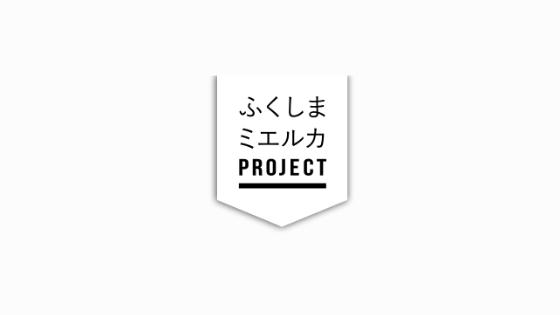According to data for the period up to December 2018 released by the Fukushima Health Management Survey Review Committee, 206 children who were 18 or younger at the time of the Fukushima accident were diagnosed with or suspected of having malignant thyroid cancer. Surgery confirmed it in 164 of them. In addition, at least 11 children underwent surgery or treatment for thyroid cancer at the Fukushima Medical University. An additional 233 persons were receiving support services for patients undergoing treatment who were found to have thyroid cancer through the FHMS. All of this suggests that many people are missing from the official numbers announced by the Fukushima Health Management Survey Review Committee.
Table 1. Children with thyroid cancer (aged 18 and under living in Fukushima Prefecture at time of accident)
Source: Prepared by FoE Japan from reports by the Fukushima Health Management Survey Review Committee, statistics to December 2018.
| Screening round | Target vs actual examinees | Confirmed or suspected cases | Confirmed by surgery |
|---|---|---|---|
| 1st (2011-2013) | Target 367,672 Actual 300,476 (Ratio 81.7%) | 115 | 101 |
| 2nd (2014-2015) | Target 381,244 Actual 270,544 (Ratio 71.0%) | 71 | 52 |
| 3rd (2016-) | Target 336,669 Actual 217,526 (Ratio 64.6%) | 18 | 13 |
| Exam when turning 25 years old | Target 22,653 Actual 1,901 (Ratio 8.9%) | 2 | – |
| Total | 206 | 164 |
Lymph node metastasis, extrathyroidal invasion, remote metastasis, etc.
Initially, the fact that many thyroid cancer cases were identified was blamed on the “screening effect.”1 It was the National Cancer Center Japan that estimated that there were 2.0 persons with thyroid cancer under the age of 18 in Fukushima Prefecture as of 2010. Dr. Shoichiro Tsugane, head of the Center for Public Health Science of the National Cancer Center, pointed out that the number of cases of children with thyroid cancer in Fukushima was about 60 times that estimate (as of November 2014). Regarding the first screening, the Fukushima Health Management Survey Review Committee interim report stated this: “The number of detected cases is dozens of times more than the number of thyroid cancer cases estimated by the national government’s regionally registered cancer morbidity statistics.” Despite this, the committee also wrote that “it is difficult to consider this to be an impact of the accident.”
Some experts claim that the discovery of many thyroid cancer cases is due to “over diagnosis,” which means cancer diagnosis that is not life-threatening or has no symptoms. However, the actual cases are serious. According to data prepared by Prof. Shinichi Suzuki of Fukushima Medical University published on August 31, 2014, 72 out of 96 children who underwent surgery had lymph node metastasis, while 92% of cases had lymph node metastasis, extrathyroidal invasion, or remote metastasis. Head of thyroid cancer testing, Prof. Suzuki, said that said of patients who went through surgery, “clinically-speaking, most of those who clearly had hoarse voices already had lymph node metastasis” and it “was not something that could be left untreated.”
Severe cases also found outside Fukushima Prefecture
Children with severe cases of thyroid cancer have also been found outside of Fukushima Prefecture. Since December 2016, the 3-11 Kojosengan Kodomo Kikin (3.11 Fund for Children with Thyroid Cancer, President: Hisako Sakiyama) has supported medical treatment expenses for patients living in Tokyo and 15 prefectures in eastern Japan who were aged 18 years or under at the time of the accident. As of December 2018, 140 patients had received assistance (93 in Fukushima, 47 outside). Recipients include cases of recurrence and repeat surgery, and metastasis to the lungs. Dr. Sakiyama commented, “There is talk of plans to reduce screening but looking at the situation, it’s the opposite we need. It should be expanded and enhanced, and a greater effort should be made for earlier detection and treatment.”
Initial exposure not fully reported
An independent investigation by the Tokyo Shimbun newspaper revealed that an 11-year-old girl in Futaba-cho had been identified with a cumulative exposure of an estimated 100 millisieverts to the thyroid immediately after the nuclear accident.2 The national government had not made this public. From March 24 to 30, 2011, the Nuclear Emergency Response Headquarters did thyroid exams on 1,080 children in Iitate, Kawamata, and Iwaki. Since all were below 100 millisieverts, no further measurements were made. Regarding the residents in areas under evacuation orders, the government said it did not take thyroid measurements, with the excuse that “they evacuated, so they were not exposed.”
As for body surface contamination testing of evacuees from the nuclear accident, the decontamination standard was raised from 13,000 to 100,000 counts per minute (cpm)3 on March 14 “because of a shortage of water for decontamination” and “to facilitate evacuation.” Apparently, no accurate records were kept regarding body surface contamination exams of evacuees, and evacuees themselves have no such records, but some evacuees claim that their measurements exceeded 100,000 cpm.
As such, even though there appears to have been no clear assessment of initial exposure, the authorities quickly concluded there was “no impact on health.” So here we are today without adequate radiation protection measures or other actions having been taken.
- The screening effect occurs when a mass screening identifies more cases of potential illness than in cases where noticeable symptoms are examined and diagnosed as being present.
- Tokyo Shimbun, “11 year old girl had 11 mSv exposure immediately after Fukushima accident: Report by National Institute of Radiological Sciences” (morning edition, January 21, 2019)
- Unit of measurement of radiation per minute detected by detector, indicating the quantity of radioactive materials present.

